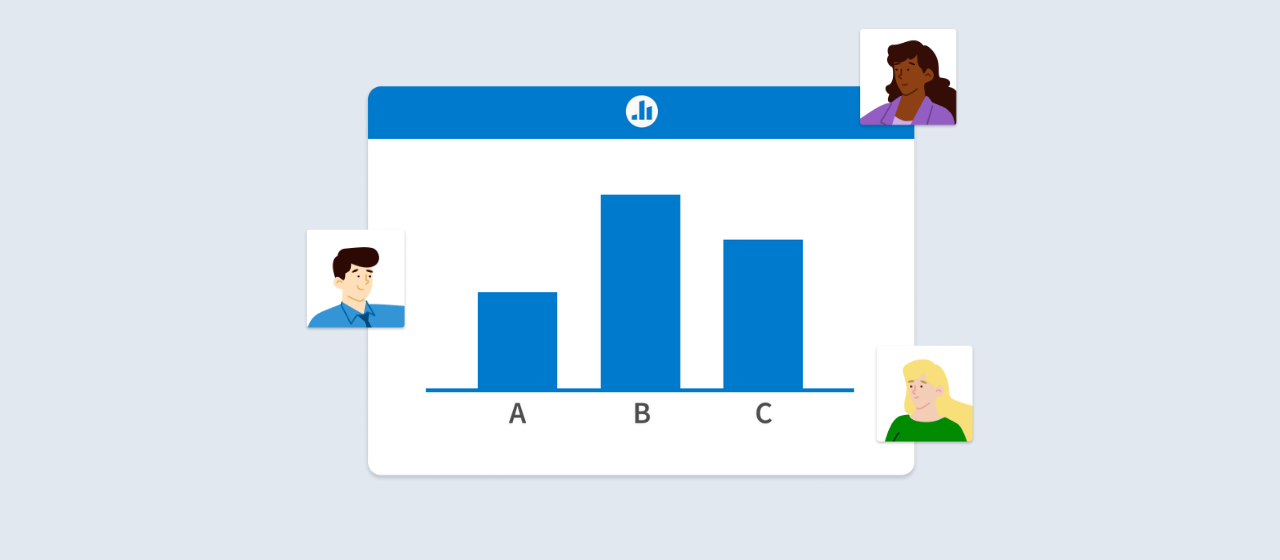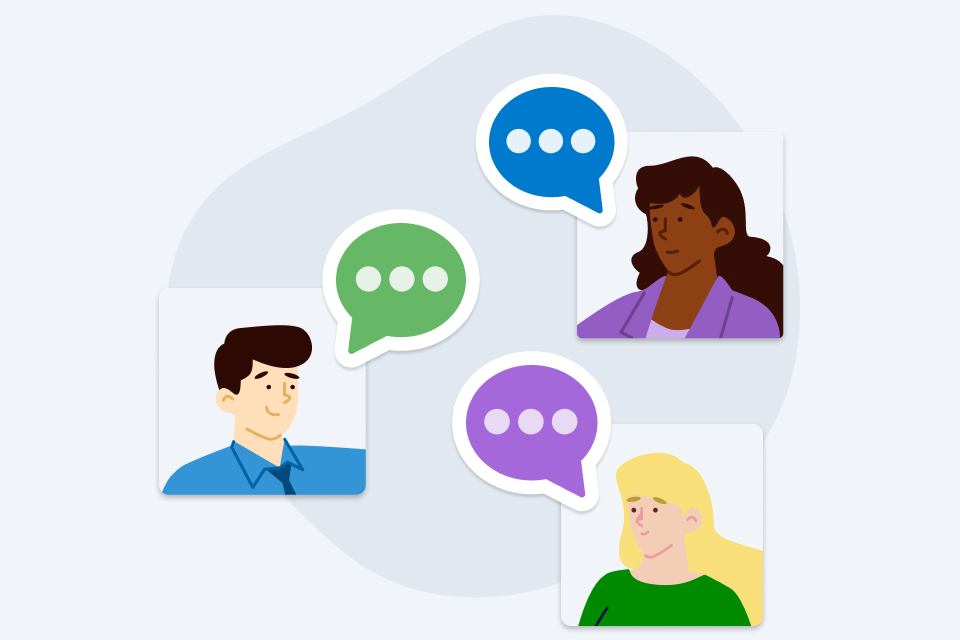Why employee experience matters—and how to improve it

Any company’s brand perception is influenced by everything from ads and packaging to customer service and social media presence. When customers have a great experience with all of those touchpoints, they become loyal advocates for your brand.
Similarly, the employee experience is shaped by every interaction an employee has with your organization, from their first interview to their final day on the job. Just as you build loyalty among customers or clients by providing a thoughtfully planned and fulfilling experience, doing the same for your employees has far-reaching benefits for any organization.
What is employee experience?
Employee experience encompasses every aspect of an employee’s tenure with your organization.
From recruiting to offboarding, each employee’s experience adds up to become your overall company culture, which strongly influences your engagement, productivity, and your bottom line as a result.
The experience you provide your employees can be one of your greatest strengths or greatest weaknesses. It can inspire people to bring their best to work every day, or it can leave them feeling disengaged, disregarded, and burned out.
Consider how a comprehensive onboarding program or exciting company retreat helps employees feel more connected and bought-in to your mission. On the other hand, think about how outdated or ineffective processes or communication channels can cause frustration and disconnects between locations, departments, or colleagues.
These are just a few examples of the touchpoints that make up your overall employee experience. Everything your employees see, hear, learn, and feel throughout their time with your company factors into determining whether they’re engaged, productive, and thriving.
Why invest in your employee experience?
Every element of your employee experience factors into your engagement levels and resulting performance, and the benefits of a strong company culture and high employee engagement are increasingly well-documented.
In one of the largest meta-analyses to date examining three decades’ worth of business data, Gallup found business units with highly engaged employees outperform less-engaged teams in every area. High engagement—the result of a great employee experience—leads to higher sales, increased productivity, and greater customer loyalty. It also results in reduced absenteeism, less turnover, plus fewer liability and safety incidents.
For any organization looking to get the most out of their people, investing in your employee experience is one of the most important things you can do for the long-term health of your business.
What are the different stages of the employee experience?
Throughout the employee life cycle, any organization has innumerable opportunities to connect with their people—or cause them to question why they came to your company in the first place. Let’s examine some critical stages of the employee experience and why they make such a noticeable impact.
Recruitment and hiring
First impressions are just as important for hiring organizations as they are for applicants. Communication and transparency during the recruitment and hiring process offer potential employees a preview of your company culture. Your job postings, interview process, and even your brand presence all have an effect on attracting top-quality talent to your company and retaining them for the long term.
Onboarding and orientation
For many people, starting a new job is equal parts exciting and nerve-wracking. Onboarding is a fantastic opportunity to integrate eager new hires into your company culture, but it’s also a vulnerable stage of the employee experience—25% of new hires quit within their first six months. If your organization is seeing high turnover among newer employees, it’s worth reexamining your onboarding and orientation processes.
When every new hire has the tools, knowledge, and support they need to thrive in your organization, they quickly become positive contributors to your business and your organizational culture.
At Poll Everywhere, we send quick employee surveys after a new hire’s first week, month, and quarter to gauge how things are going and gain insights into where we can improve. This is especially useful for larger organizations like finance or health care companies trying to standardize and optimize onboarding across multiple locations.
Daily tasks and experiences
This is the stage of the employee experience when people are settled into the daily routine of their jobs. What each employee learns, sees, and feels during that routine defines how well they engage with your organization. Do they have a voice in important decisions? Are they getting helpful feedback from their manager? Are your company’s software tools and systems efficient and user-friendly, or do they feel like an added burden to job responsibilities?
Identifying and addressing these friction points is the key to improving your employee experience, and it’s only possible if you’re in regular communication with your workforce about what’s working and what’s holding them back.
Development and retention
In many cases, this stage of the employee experience determines whether a person leaves within a couple of years or becomes a long-term asset to your company. High achievers generally have a drive to progress in their careers, which is why development opportunities are one of the primary drivers of employee engagement. Effective employee development programs keep your workforce engaged in your company mission, and benefit your business as your people expand their skills and knowledge.
Offboarding and exit
Employees’ experience on their way out largely determines whether they’ll become an advocate or a detractor for your brand in their future interactions—both personal and professional. Collecting candid feedback through exit surveys and interviews gives departing workers a chance to be heard and can reveal blind spots or potential risks within your organization.
While no company wants to replace a valued worker, celebrating your longtime employees’ contributions ends their experience working for your organization on a high note.
At Poll Everywhere, we host a farewell hangout for every outgoing colleague and compile goodbye messages into a slide deck we share during the gathering. It’s something small that makes people feel valued, and it’s something that shapes the employee experience.
What are the challenges of delivering a great employee experience?
When businesses are in their fledgling stage with just a handful of people, creating a positive company culture seems to come naturally. But for enterprise-level organizations with higher headcounts and multiple locations, it becomes much more challenging to scale the all-in culture that makes an organization successful in the first place. These are some of the most common roadblocks encountered by companies looking to improve their employee experience.
Gathering actionable data
Creating a great employee experience requires two-way communication with your entire workforce. Without a thorough understanding of where people are thriving and where they need support, you’re just making educated guesses. Regular employee surveys are an essential part of the equation because they give you useful data to guide your decision-making.
Wide-ranging employee needs
In complex organizations with many different roles, it can be a struggle to balance the varying needs of your teams. What a financial analyst requires to be successful could look very different from a health care administrator. This reinforces the need to regularly gather input from employees throughout the company, so you can develop policies that do the most good for the most people.
Siloed teams
While it’s human nature for your teams to focus on the things that affect them most, lack of coordination between departments can lead to frustrated employees and ineffective processes.
Finding the right communication tools to facilitate open conversations throughout your organization breaks down those silos and encourages greater collaboration across the board.
Burned-out employees
As millions of workers shifted into overdrive during the COVID-19 pandemic, many people found unsustainable workloads became the new standard. When employees burn out, disengagement is a natural result. It’s much easier to keep employees motivated with a sustainable workload and supportive culture than it is to bring them back into the fold once they’ve hit their breaking point.
How to build an employee experience strategy
Many company leaders understand the importance of improving their employee experience, though it can be tough to know where to start. Here are some of the most important things to keep in mind as you develop an employee experience strategy tailored to your organization.
Measure your employee experience
Gathering all the information you can about your current employee experience is the first step toward building a better one. With the right survey tools, you can empower anyone in your organization to collect useful data, whether they’re responsible for a few direct reports or a few thousand.
Instead of overwhelming employees with a lengthy survey every six months, conduct regular pulse surveys on focused topics. Numerical-value questions are great for gathering objective data, though open-ended questions are also extremely valuable because they give employees a chance to add context and nuance.
No matter the focus of your survey, keep your responses anonymous. The opportunity to deliver candid feedback without fear of reprisal builds trust with your workforce, especially when you take action to address their pain points. It also leads to valuable insights from employees who aren’t comfortable speaking up during a meeting or going to management with their concerns.
Set goals and priorities
At most companies, budgets are finite, as is employees’ tolerance for rapid change. Your priorities in any company culture initiative should be driven by the greatest growth opportunities. Combine the insights from employee surveys with your operational data to determine where you should be focusing your efforts and in what order. Whichever stages of the employee experience you focus on first, a clear list of goals helps you track your progress.
Invest in improvements
Based on your biggest priorities, empower your leaders to make needed changes. If your organization is experiencing high turnover among new hires, your onboarding and training programs likely need some attention. If you’ve got unfilled positions for months on end, your recruiting and hiring process may be causing top candidates to pursue other options. And if employees are frustrated by inefficient processes or inadequate systems, streamlining daily tasks with new software solutions could be a big quality-of-life improvement.
Build a culture of communication with Poll Everywhere
Improving your employee experience doesn’t happen overnight—it requires ongoing communication, measurement, and investment to build a culture that attracts and retains top talent. Treating employee experience as a long-term priority instead of a temporary quick fix will pay dividends with higher employee engagement—and all the business benefits that come with it.
To understand and improve your company culture, you need the right tools to ensure each employee’s voice is heard. Poll Everywhere makes two-way communication a daily part of the employee experience by facilitating open conversations at every level of your organization.
Poll Everywhere’s user-friendly platform offers a huge variety of interactive Activities that make employee communication more accessible and engaging. Anyone can easily design and distribute surveys, quizzes, case discussions, and lots more, and gather responses asynchronously or in real time. It’s the ideal way to encourage greater collaboration and maintain a human touch while increasing your quantity and quality of employee experience data.
- Host live Q&As during an all-hands meeting, even with a large and dispersed workforce.
- Send quick surveys about onboarding, daily processes, or anything else that impacts the employee experience.
- Empower managers to collect more feedback from their direct reports.
By giving every employee a voice, company leaders can stay in touch with the needs of their workforce and create an employee experience that allows their employees and business to thrive.
Schedule a free demo today to learn more about how Poll Everywhere can help you engage your employees and gather the data you need to make better-informed decisions.

